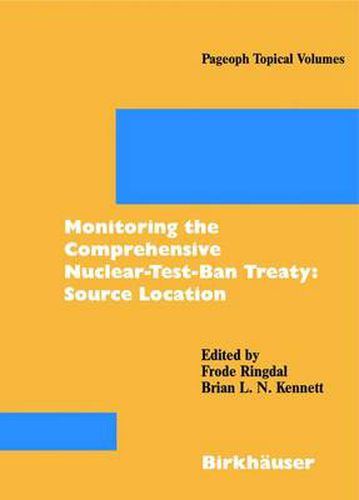Readings Newsletter
Become a Readings Member to make your shopping experience even easier.
Sign in or sign up for free!
You’re not far away from qualifying for FREE standard shipping within Australia
You’ve qualified for FREE standard shipping within Australia
The cart is loading…






This title is printed to order. This book may have been self-published. If so, we cannot guarantee the quality of the content. In the main most books will have gone through the editing process however some may not. We therefore suggest that you be aware of this before ordering this book. If in doubt check either the author or publisher’s details as we are unable to accept any returns unless they are faulty. Please contact us if you have any questions.
This volume presents recent advances both in the methodology of locating seismic events and in the large-scale international regional calibration effort that is now underway. It is the first of eight volumes about the global verification system for monitoring the Comprehensive Nuclear-Test-Ban Treaty (CTBT). In September 1996, the United Nations General Assembly adopted the Comprehensive Nuclear-Test-Ban Treaty (CTBT), prohibiting nuclear explosions worldwide, in all environments. The treaty calls for a global verification system, including a network of 321 monitoring stations distributed around the globe, a data communications network, an international data centre (IDC), and on-site inspections to verify compliance. This volume contains research papers focusing on seismic event location in the CTBT context. The on-site inspection protocol of the treaty specifies a search area not to exceed 1000 square km. Much of the current research effort is therefore directed towards refining the accuracy of event location by including allowances for three-dimensional structure within the Earth. The aim is that the true location of each event will lie within the specified source zone regarding postulated location. The papers in this volume cover many aspects of seismic event location, including the development of algorithms suitable for use with three-dimensional models, allowances for regional structure, use of calibration events and source-specific station corrections.
$9.00 standard shipping within Australia
FREE standard shipping within Australia for orders over $100.00
Express & International shipping calculated at checkout
This title is printed to order. This book may have been self-published. If so, we cannot guarantee the quality of the content. In the main most books will have gone through the editing process however some may not. We therefore suggest that you be aware of this before ordering this book. If in doubt check either the author or publisher’s details as we are unable to accept any returns unless they are faulty. Please contact us if you have any questions.
This volume presents recent advances both in the methodology of locating seismic events and in the large-scale international regional calibration effort that is now underway. It is the first of eight volumes about the global verification system for monitoring the Comprehensive Nuclear-Test-Ban Treaty (CTBT). In September 1996, the United Nations General Assembly adopted the Comprehensive Nuclear-Test-Ban Treaty (CTBT), prohibiting nuclear explosions worldwide, in all environments. The treaty calls for a global verification system, including a network of 321 monitoring stations distributed around the globe, a data communications network, an international data centre (IDC), and on-site inspections to verify compliance. This volume contains research papers focusing on seismic event location in the CTBT context. The on-site inspection protocol of the treaty specifies a search area not to exceed 1000 square km. Much of the current research effort is therefore directed towards refining the accuracy of event location by including allowances for three-dimensional structure within the Earth. The aim is that the true location of each event will lie within the specified source zone regarding postulated location. The papers in this volume cover many aspects of seismic event location, including the development of algorithms suitable for use with three-dimensional models, allowances for regional structure, use of calibration events and source-specific station corrections.